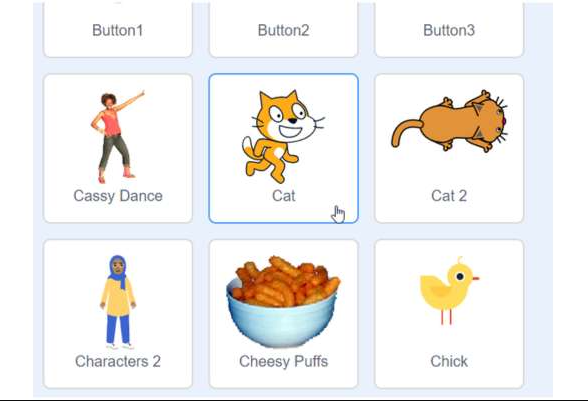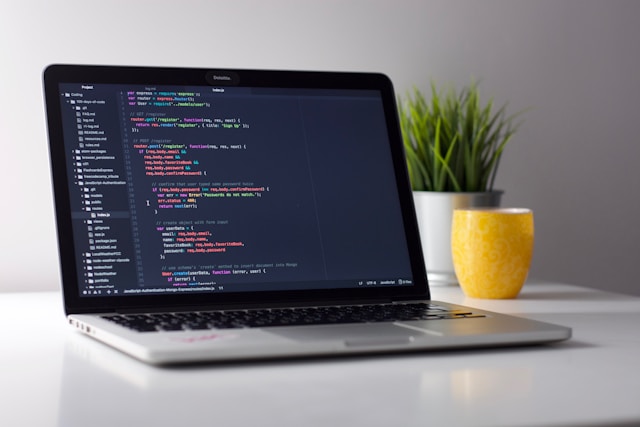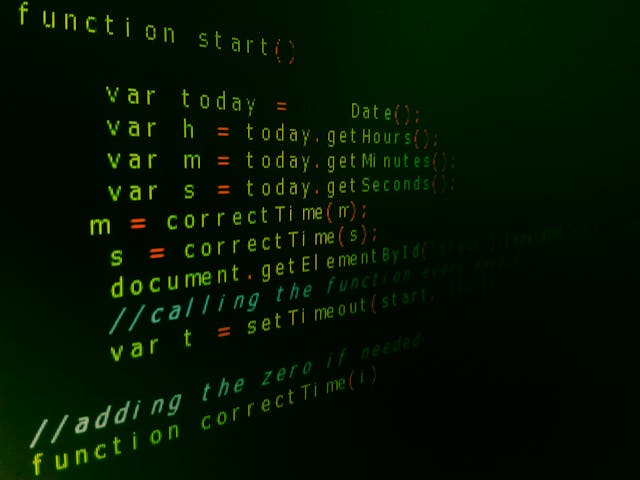Immersing oneself in the enigmatic realm of Scratch programming unlocks boundless realms of creativity and innovation. This visual-based coding language, tailor-made for those with scant to zero prior exposure to programming, caters exquisitely to their creative instincts. A project that often garners much attention from rising programmers is mastering the art of creating a jumping game on Scratch – an interactive entity serving both entertainment and as a practical pathway towards grasping fundamental programming notions.
Scratch navigates budding coders through the labyrinthine process of crafting a three-dimensional simulated environment with utmost precision where characters, or sprites as they are called within this world, come alive via visually appealing blocks indicative of coding mechanisms. The creation process of a jumping game on Scratch orbits around principles like command sequences, events control flow, coordinates to name a few basic components intrinsic to programming. Command over these building blocks and their manipulation is pivotal for fabricating an engaging gaming experience that functions seamlessly.
With Scratch at one’s disposal, assimilating the intricate science woven into these concepts becomes feasible and surprisingly enjoyable even for neophytes in the field.
Setting Up Your Scratch Environment for a Jumping Game
Embarking upon the path to craft a jumping game in Scratch, one must delve into specific paradigms. Primarily, it necessitates an intimate understanding of Scratch’s workspace – a canvas woven with key elements such as the stage, sprite pane, blocks palette and coding area. Deep comprehension of these fundamental zones will streamline your voyage towards successful game development.
The next step is to select or conceive a sprite for your interactive creation. This animated figure stands as your protagonist set to execute all movements and actions – jumping included.
However, you may find yourself ensnared by the query: “how does one program the act of leaping within their Scratch game?” The answer lies nestled within clever manipulation of motion, control and event blocks. By synergizing these coding constructs can you breathe life into your character’s ability to jump.
Take heed though; balance is paramount when fine-tuning this mechanism -your sprite should neither pass through platforms nor exist in perpetual levitation. Mastering these stages places you on the brink of effectively curating an environment ripe for creating a jumping game with Scratch.
Designing Characters and Backgrounds for Your Game
As we embark on the journey of acquiring the knowledge to craft a game utilizing Scratch, an essential part of our voyage orbits around mastering the artistry involved in sketching characters and landscapes for your creation. The heartbeats of any gaming venture are its characters as they furnish it with a personal imprint or narrative component. Concurrently, an adroitly structured background ensemble can amplify the overall aura of your game by giving life to spaces where your character resides and interacts. To mold distinct sprites, Scratch offers an integrated editor furnished with a panoply of features that both novices and gurus can utilize to sculpt their creations. It is advised though to maintain simplicity and focus in design during initial stages.
Furthermore, when it comes down to landscape sets, they hold equal importance as those portrayed by characters themselves. The user-friendly interface provided by Scratch allows users access to a wide assortment of built-in backdrops or provisions them with tools for uploading customized ones. An apt selection of backdrop has power enough not just set but effectively dictate the tone and mood of your game- be it lively, darkened spirits or adventurous among other moods possible! Cruciality lies in ensuring that chosen backdrop aligns seamlessly with ethos driving game’s progress hand in hand harmoniously alongside its characters. Summarily speaking, while daunting at first glance perhaps; designing step within this process could very well be deftly mastered through practice coupled with exploration inside confines offered by Scratch interface.
Programming Your Character to Jump in Scratch
In the realm of Scratch programming, the skill to command your avatar to leap is a vital facet in crafting an enthralling gameplay adventure. This interaction can be mastered by deftly manipulating diverse control and motion blocks. The theory revolves around altering the y-coordinate of the character’s sprite as a reaction to a defined incident such as pressing a button. Commensurately, this character maneuver’s governing logic and methodology are grounded on basic tenets of game physics.
An apt procedure for implementing this feature could involve harnessing a repeat-until loop structure coupled with an uncomplicated algorithm designed for gravity effect. Encased within this loop are two primary movements that are duplicated: ascension followed by inevitable descent instigated by gravity’s pull. This framework assures these actions unravel sequentially, ignited by the press of a designated key which sets off the loop into action. The immersive design opportunities birthed from these methods underscore the refined complexity inherent in Scratch programming.
Creating Obstacles and Challenges for Your Jumping Game
In the quest to render your leap-centric game more enthralling and mesmerising, it becomes a central necessity to instill an array of hindrances and trials. The integration of these components escalates the complexity level of the diversion, thereby making it increasingly riveting for the participants. These aspects stimulate analytical thinking, resolution devising, and amplify hand-eye coordination – all collectively culminate towards a superior gaming encounter.
Hindrances in Scratch can be concocted using a plethora of sprites. For this task, one could harness the power of the clone function for fabricating series upon series of obstacles. The positioning along with movement trajectory of these hurdles can be manipulated and fine-tuned resulting in spontaneous patterns that further deepen the challenge. The intensity level of these obstructions can be programmed to escalate as per player’s advancement within the game arena. Moreover, when crafting challenges do not forget to maintain equilibrium between toughness and feasibility so as to ensure that fun quotient remains intact without letting frustration creep into gameplay.
Adding Score and Levels to Enhance Gameplay

Game design’s user experience hinges on the core elements of scoring and level progression. A meticulously crafted system for points and levels can spark a captivating challenge, propel momentum, and infuse gameplay with an added layer of complexity. Scratch—a programming environment—grants developers the liberty to seamlessly weave these components into their jumping game, thus boosting its charm.
In the realm of Scratch, developers have access to variables that monitor scores throughout gameplay. Each successful leap corresponds to a pre-set number of points, which gradually amasses to form the player’s score. This growing score can set off level transitions within the game creating an ambiance imbued with growth and triumph. Game levels offering fluctuations in backdrop scenes, difficulty levels or pacing diversity – all vital in maintaining a player’s fascination towards the game. Developers have at their disposal this strategic interplay between score and level dynamics that they can tailor-fit based on their target audience’s engagement inclinations – thereby maximizing the gaming experience.
Scoring and level progression are key in creating a compelling user experience within game design. By using Scratch, developers can integrate these elements into their jumping games, enhancing the overall gameplay. Here’s how:
- Developers have access to variables that track scores throughout gameplay: In Scratch environment, each successful leap by the player corresponds to a pre-set number of points. These points accumulate over time, forming the player’s score.
- Level transitions can be triggered by an increasing score: The growing score can initiate changes in levels within the game. This creates a sense of growth and triumph for players as they progress through different stages.
- Game levels offer varying scenes, difficulty levels or pacing diversity: Different backdrops and challenges at each level help keep players interested and engaged with the game.
- Score and level dynamics are customizable based on target audience’s engagement inclinations: Developers have control over how scoring and leveling work together within their games. They can tailor these factors based on what will most engage their specific audience – thereby maximizing the gaming experience.
By understanding these core components of game design, developers can create more engaging experiences for players while also making effective use of Scratch programming environment capabilities.
Implementing Sound Effects and Music in Your Jumping Game
Immersing oneself in a game, absorbing every nuance, can be dramatically enhanced by the strategic inclusion of music and sound effects. These auditory elements inject vibrancy into gameplay, enriching its depth and heightening user engagement. Key to this is not merely their presence but also how they are meticulously designed and implemented. Imagine an energetic tune invigorating your jumping game or distinctive audio cues each time your character deftly skirts an obstacle – these provide valuable acoustic feedback.
In Scratch’s realm, integrating music and sound effects within your project is rather seamless. It offers a vast repository of sounds and musical clips that you could weave into your jumping game or even lets you upload bespoke sounds if desired. The application of these sounds ties them to specific actions or events within the game; for instance, triggering a particular sound every time the character leaps skywards. You may further delve into conditional loops and cues to manage timing as well as repetitive playbacks judiciously – thus granting developers full control over creating an auditory experience that dovetails perfectly with the visual aspects of their games.
FAQ
In the realm of visual programming languages, we find an entity named Scratch, a creation borne out of MIT Media Lab. This tool gives users the power to weave interactive tales, invent games and bring animations to life. While it’s crafted with those aged 8 to 16 in mind, its allure reaches far beyond these bounds.
The first step into creating your world within Scratch involves birthing a new project and then forming your stage and sprites. Inserting any necessary blocks that drive your game mechanics is also crucial. However, remember each journey will be different depending on the unique needs of your jumping game.
As you shape characters and landscapes, let them reflect the soul of your game – its theme and style. Choose colors that not only please the eye but resonate with what makes your game special. Also bear in mind how sizeable or small you want your characters compared to their surroundings.
To give flight to a character in Scratch necessitates an amalgamation of move, control, and sensing blocks; like ingredients for an enchanting potion! Your task is establishing a script which propels our sprite upwards upon key press before gravity pulls it back down again.
Fashioning hurdles calls for additional sprites programmed with varying behaviors such as movement or interaction patterns offering potential conflict points between player & elements . For instance , why not craft antagonistic sprite maneuvering across screen compelling players time jumps avoiding collision?
Intriguingly, tracking progress achieved through variables – incrementing as player forges ahead. Stages or sprite behaviors can be modified with score rise creating escalating difficulty keeping players on their toes.
To infuse your Scratch project with auditory delights , you may import your own sounds or select from the Scratch’s treasure trove of audio files . These could be tied to specific events or actions within your game, giving character jumps or reaching a particular score an added layer of excitement.


